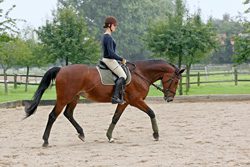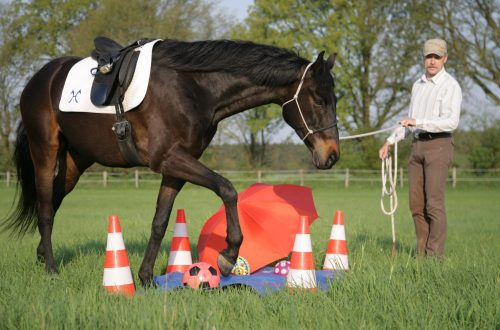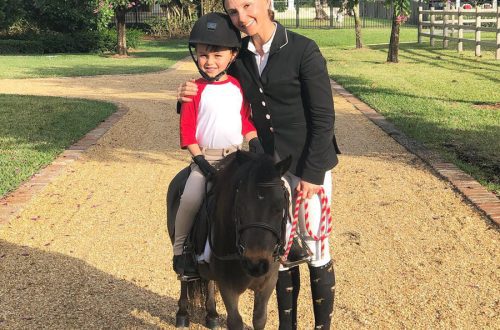
Character types: horses are sensitive and too accommodating
Character types: horses are sensitive and too accommodating
There are no identical horses, and it’s not just about “external” characteristics (exterior, breed, gender). What is “inside” also matters. In this article, I would like to talk about two types of horse characters and how to combine knowledge about them with the choice of training methods. My review is by no means comprehensive, but it captures the main points quite vividly.
Too obsequious horse
Horses of this type are characterized by a great drive to work and a high degree of ambition, which is sometimes misinterpreted as nervousness. They want and love to learn and please the rider, often anticipate his actions (they answer before the rider has completed the signal or message, making mistakes as a result). Horses of this type can be very difficult to get to relax, often due to riders reacting inappropriately to their expectations.
The owner of such a horse should consider himself lucky – he only needs to learn how to manage the ambitions of his horse so that the horse does not do everything “his own way.” If this is achieved, working with a horse of this type will be a real pleasure.
Common learning mistakes: it is fundamentally wrong to punish such horses for mistakes that stem from their desire to learn and show themselves. In addition, frequent repetitions of the same exercises should be avoided.
Tips for teaching. Do you have a horse that is eager to please? Congratulations! As mentioned earlier, the problems arise not because of this feature of its character, but because of how the rider reacts to the zeal of the horse.
If you can train to keep your horse positive, you can teach him anything. In dressage, this horse is referred to as “electric” – it responds immediately to the subtle impact of the aids, is sensitive to the legs, has a healthy desire to go forward and wants to learn. Horses of this type, if they have good jumping ability, are better than others on technically difficult routes.
When rhythm, suppleness, relaxation and contact (or more simply “gas, brake and steering”) are found, it is recommended to train horses of this type in simple dressage movements to use their mental abilities and keep them from getting bored.
Please note that it is very important not to repeat the same exercise an infinite number of times. The best example at the beginning levels of training is a simple change of foot. While the rider of a phlegmatic, unflappable horse may repeat this exercise 10 times in a row, a horse that is eager to please will do just fine two or three times. As soon as she begins to realize what should happen next, she will no longer wait for the signals of the rider and will begin to anticipate. This will only lead to the fact that the quality of a simple change of foot will deteriorate – the horse will most likely stray, cross, enslave, and not smoothly transition into a walk and rise into a canter from the other leg. The more the rider tries to repeat the “already-not-so-good-change” to improve it, the more the horse will become enslaved as he now feels the rider is holding him (the horse realizes he needs to canter with the other legs, but cannot understand that she needs to take a couple of steps between canter reprises). The rider continues to practice the movement and may even begin to punish the horse for “bad behavior” and the horse becomes even more tense and irritated. This vicious cycle robs the willing horse of the joy of work.
Instead of repetition, the rider needs to vary the tasks. Make two simple changes, then ask the horse to do something completely different, then ask again for one or two more simple changes. If the Horse is still not waiting for the Athlete’s signal and is not performing a correct simple change of foot with clear steps in between, the Athlete should increase the number of steps. Instead of asking your horse for three to four steps, you can ask for 10 or more. You can ask for a yield or shoulder-in (for more experienced horses) on the walk to help prevent the horse from “predicting”.
The horse must learn to wait for the rider’s signals. While waiting, she will relax, and relaxation is a prerequisite for the successful execution of any element or movement.
sensitive horse
A horse of this type can be a real gift for an experienced rider.
Sensitive horses usually have a healthy degree of readiness, respond well to light and subtle input from the aids, and are obedient to agreed-upon signals to do everything right. But this is only one side of the coin. The other hides the fact that such horses quickly unbalances everything they don’t understand. This could be the wrong message, or a signal that the rider didn’t give too clearly, a request to perform the move in the “inappropriate” place for this (for example, changing the foot in the air too deep in the corner). A sensitive horse is pissed off by such trifles with fitting ammunition, like a poorly tightened, slightly dangling primer. While many horses do not allow themselves to lose their temper over such nonsense, sensitive horses suffer because of it. That is why horses of this type are suitable for experienced riders with a well-developed “horse sense”.
Common Mistakes in Learning: work on a sensitive horse by an inexperienced rider or a rider with a very modest “feeling”. This combination of rider and horse often ends in disaster, as this type of horse easily becomes unsafe, off-balance and nervous due to confusing signals or bad riding. Anger and punishment on the part of the rider are inappropriate – the horse will not accept them.
Tips for teaching. Sensitive horses can be compared to artists or even just … geniuses. Their sensitivity is their strength, but also their weakness. They can achieve great results, but they can get overly upset about something small and therefore do things their own way.
The rider of a sensitive horse should treat this character as a gift, trying to keep the sensitivity, to adapt the horse’s “quirks” to work.
When a rider knows his horse well, he sees what is causing him stress and gracefully handles those situations without getting angry or frustrated. When a sensitive horse is trained according to the Learning Scale, its sensitivity can be successfully used to achieve a state of “on the bit and legs” and, consequently, conduction. Horses of this type will respond to the most subtle input from the controls and the rider will expend little energy while riding. When problems arise during training (which is inevitable), the rider must be careful not to go too far, using too much whip or spur, too much pressure on the horse.
Sensitive horses react very negatively to harsh punishment or being forced to do something they are not yet ready for. This attitude towards a sensitive horse will affect his willingness and willingness to cooperate with the rider in the future.
Britta Skoffman (source); translation by Valeria Smirnova.





